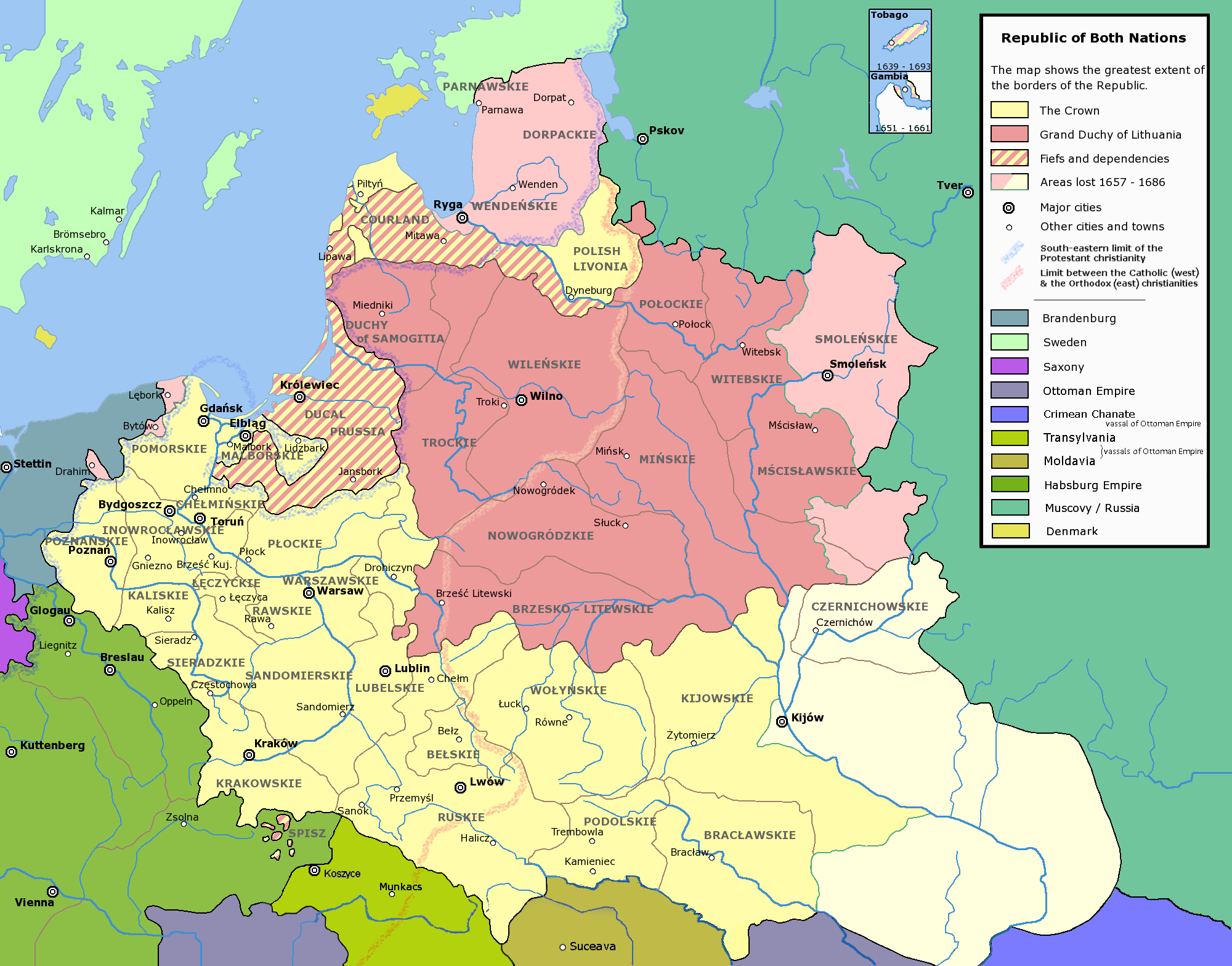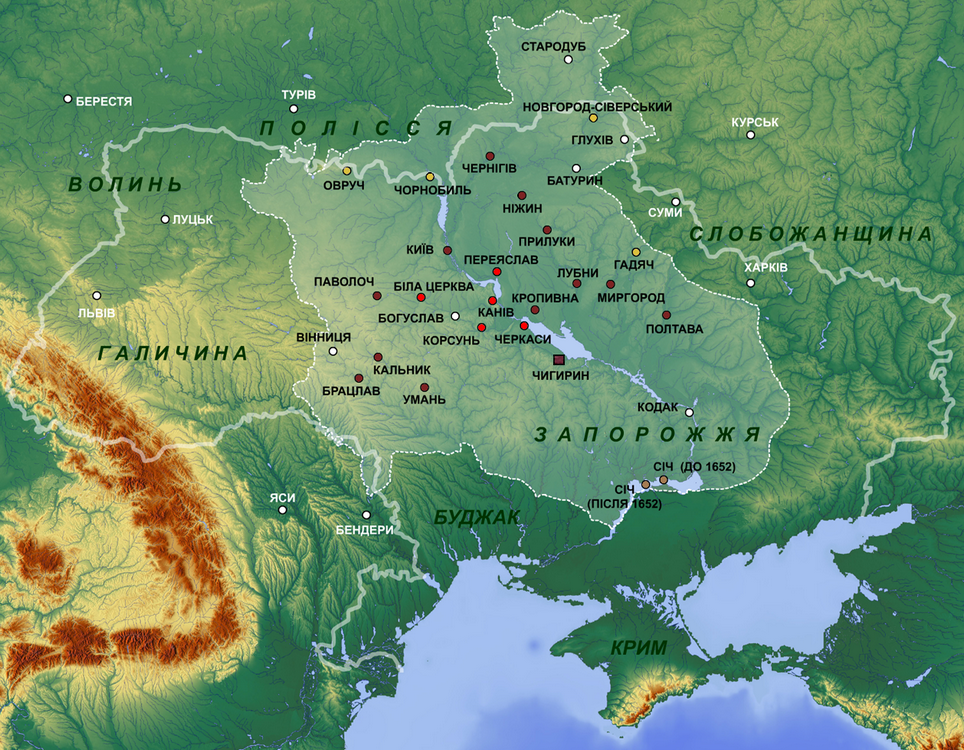This is a separate article about history of core Ukrainian lands around Kyiv.
These are the areas that were settled during the Kyivan Rus times. In good times these areas prospered and spread its way of governance via small princely states. From there the original Rus civilization spread to other areas west (only to Lviv as further west was Poland) and north-east into modern Russia.
Then came Mongol invasion that decimated most of the original Rus. What is now Russia mostly fell under control of Mongols and What is now Ukraine and Belarus under control of Lithuania.
Then, some-time after Poland and Lithuania formed a union under Lithuanian Jagellonian dynasty, Lithuania transferred southern areas to Poland. That was done as part of internal governance readjustment and further separated areas that became modern Ukraine from what became Belarus.
Back in the days borders between Ukraine and Belarus were much further north and I think it Ukraine-Belarus border should indeed be further north, similar to this map.
Dissatisfaction with this adjustment lead to Khmelnitsky uprising, as living conditions were much better in Lithuanian part of Polish-Lithuanian Commonwealth. Lithuania part was multilingual and multiconfessional with no discrimination based on language or religion. In contrast Polish part was monolingual and Catholic only. Thus, Orthodox Ukrainian speaking people of modern Ukraine ended up suffering under Polish rule.
That eventually led to a Khmelnytsky Uprising
When Bogdan Khmelnytsky entered Kyiv during his upring against Polish rule, he declared himself Hetman of All Rus as he attempted to revive the old independent Kyivan Rus.
However as uprising fortunes begun to decline, Khmelnytsky had to find some new allies if he was to avoid being hanged in Kyiv by Polish forces. Moscow was willing to help, but only on condition that areas of the uprising will become part of Russia. That is not what Ukrainians wanted, but alternative was death.
In the end of the day pragmatism won: Khmelnytsky thought of promising Russia anything now in exchange for soldiers for the war. Then somehow screw them further down the line at opportune moment. Moscow kind of expected them to do something like that so they too had a plan how to manage that from there on.
Pereslavl Union dragged Moscow into Russo-Polish War, in which they reached a separate agreement with Poles about dividing Ukraine in two halves. Ukrainians felt betrayed but there was nothing they could do.
The original state Khmelnytsky envisioned:
Became just the left bank of Dnipro River and the city of Kyiv.
In fact, it was not that much bigger compared to Russian province of Sloboda Ukraine (shown in green in the same map)
Separate Polish Western Hetmanate also existed for some time until Poles abolished it.
As I mentioned before Khmelnytsky intended to call his country Rus, but Moscow who also called itself Rus or Russia vetoed that as Russian Tsar claimed to be only successor of Kyivan Rus and will not accept another Rus. That would have made them South and North Rus like South and North Korea.
Because of that Cossacks of Hetmanate did not call their country anything in particular. Terms like Territory of Zaporozhian Army were used sometimes. Hetman in Exile Phyllip Orlyk was the first to use term Ukraine in his constitution. My personal take on etymology is from term 'U krainy' which means 'in the country.'
Left-bank Hetmanate continued to haggle with Moscow over the terms of their union. Kind of like Hong Kong and Mainland China. Moscow saw Hetmanate only as intermediate stage, planning to eventually turn this area ordinary provinces. However Cossack army in Baturin prevented them from just abolishing the Hetmanate altogether, as these Cossacks would just fight Moscow army for their country.
During Great Northern War, Hetman Mazepa decided it was time to break up the Union and sided with Carolus Rex of Sweden in exchange for Sweden recognizing Hetmanate full independence with no further pre-conditions. However, Sweden lost the war in the Battle of Poltava. Mazepa and Cossacks who sided with them also lost their place in Hetmanate.
From there what was left of Cossack Army in Hetmanate could no longer resist Moscow's will, though Hetmanate was not completely abolished and redivided into Russian Gubernias with appointed governors until something like 1764
After abolition of Hetmanate, Russia tried to Russify this area but with little success. Tenacious and rebellious Ukrainians refused to be assimilated and managed to preserve and even develop their identity during these times as well.
During the Russian Civil War, Ukrainians decided it was their chance to become independent again and declared their independence once more. This time they sided with Poles, who also saw Russian Civil war as a chance to restore their own independence.
Proposed borders of the new Ukraine were all rather different from the current ones. Many of them included areas that are far from current borders.
In practice none of that could have been realized. Just like last time Poles and Russian again divided Ukraine between themselves. Pilsudski who commanded Polish Army and actually fought Russians was against it, but he could not stop that.
On the separate note, during these times another revolver Ukrainian state, West Ukrainian People's Republic agreed to form a union with the Kyiv's UNR. That fact shows that both West and Central Ukraine have enough in common to believe in unified state.
Western Ukraine with the capital in Lviv avoided many of the calamities that befell areas around Kyiv, but it does have shared identity with the Ukraine proper.
Then finally during the World War II USSR managed to take Polish part of Ukraine, pushing Poland itself much further west.
.jpg)





No comments:
Post a Comment